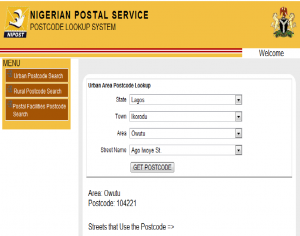How to create a Blogger Blog and use it for Adsense
How to create a Blogger Blog and use it for Adsense
Making money online is only possible with time and consistent effort.
Blogger.com offers free blog hosting and easy-to-use templates to create your site, with built-in Adsense functionality. Adsense is pay per click advertising in which advertisers pay Adsense to run ads on their behalf while web publishers get paid a small amount whenever a site visitor clicks on an ad placed on your website or blog. Build your own Adsense-enabled blog and work towards some supplementary income.
In my last article, I asked you to decide on a blog concept. Choose a topic or niche you have knowledge about or interest in. To make money from a website, you must be able to generate traffic. Remember that authentic content brings in traffic, and good content is much easier to create if you are well acquainted with, or very interested in, the topic you are writing about. If you garden, for example, start a gardening blog.
Consider these factors when making your final decision:
1) how many competitor blogs exist on the same topic,
2) how many Adsense ads are available for that topic, and
3) how likely are you to be able to create consistent, reader-worthy content for it.
Create branding. Choose a distinct name that is easy to remember. Check to see if the name you’ve chosen is available on Blogger.com, as well as on email and Twitter. If so, open accounts to secure the name before someone else does. Your Blogger.com URL will include the word “blogspot,” but Blogger.com also offers the option of publishing to a domain instead of their free blogspot address. If the name you’ve chosen is available as a domain and you can afford the monthly web hosting cost, purchase your domain. Create an avatar or logo, and use the same one everywhere.
Build your blog. Spend some time researching and viewing successful blogs to study their layout. Blogger.com has user-friendly templates with gadgets that are easy to add. Insert features such as “Followers,” which enables people to follow your blog and be notified when you post new content. For the protection of their advertisers, Adsense requires that your blog have legitimate content, so don’t monetize your blog quite yet.
Create top-quality content that provides your readers with useful information. Write with proper grammar and spelling. Write short, concise, valuable posts that make readers want to bookmark your site and return. Use humor, but remain professional. Every published keystroke is potentially permanent, because your content can be copied and forwarded before you have a chance to edit or delete, so never say anything inflammatory or negative. Study search engine optimization, which is the art of designing and writing web content so that search engines can find it more easily, and infuse your writing with lots of searchable phrases that are relevant to your topic.
Enrich your site with imagery. Purchase stock photographs, or take photos yourself. Remember that when you “right click, save-as” any photo from the web you are stealing, unless that photo is specifically marked free for use. Microstock agencies are more affordable than traditional stock photography or hiring a photographer, although for the reduced cost you lose image exclusivity and run the risk that images you purchase will be seen elsewhere. Browse “free” sections of agencies to see if any of their featured images meet your requirements.
Monetize your blog. While logged in to your Dashboard, click on the “Monetize” tab, and fill in the required information. Adsense will review your site for legitimacy and viable content. Once your blog has been approved, populate your site with ads.
Study Adsense rules very carefully, and follow them. Adsense disables accounts without notice for violation of their rules and policies. They have an appeal process, but there is no guarantee you will be reinstated; once you have lost your Adsense account, you cannot open another one.
Above-the-fold advertising is seen the most by newspaper readers, and the same applies to websites. Place at least one ad above the scroll line, so that your readers will see it without having to scroll down. Avoid inserting too many ads, as this will make your site appear spam-like.
Advertise your site. Network on line, via social media sites such as Facebook and Twitter. Leave comments on other blogs, but only if you have something constructive and positive to say about their content—don’t just comment asking them to visit your site. Add your website address to your email signature, and ask your friends to pass it along.
Work daily. Add quality content on a regular basis. Three high quality posts per week are better than three quick and careless posts per day. On the days that you are not posting, network instead, as well as research and learn.
Tips & Warnings
Avoid becoming overwhelmed by the vast amount of available information about blogging for money by keeping a notebook to list topics you’d like to research. That way you won’t feel pressured to learn everything at once, and you can refer to your list whenever you have a moment to look something up.
Be patient, and remember that you won’t see as much income as you’d like in the beginning.
Never tell friends and family to click on your ads. These are called invalid clicks and will result in permanent removal of your Adsense account.
CREDITS:
www.ehow.com
www.adsense.blogspot.com
THANKS FOR READING.
MAKE YOUR COMMENT AND ASK YOU QUESTIONS!
Blogger.com offers free blog hosting and easy-to-use templates to create your site, with built-in Adsense functionality. Adsense is pay per click advertising in which advertisers pay Adsense to run ads on their behalf while web publishers get paid a small amount whenever a site visitor clicks on an ad placed on your website or blog. Build your own Adsense-enabled blog and work towards some supplementary income.
In my last article, I asked you to decide on a blog concept. Choose a topic or niche you have knowledge about or interest in. To make money from a website, you must be able to generate traffic. Remember that authentic content brings in traffic, and good content is much easier to create if you are well acquainted with, or very interested in, the topic you are writing about. If you garden, for example, start a gardening blog.
Consider these factors when making your final decision:
1) how many competitor blogs exist on the same topic,
2) how many Adsense ads are available for that topic, and
3) how likely are you to be able to create consistent, reader-worthy content for it.
Create branding. Choose a distinct name that is easy to remember. Check to see if the name you’ve chosen is available on Blogger.com, as well as on email and Twitter. If so, open accounts to secure the name before someone else does. Your Blogger.com URL will include the word “blogspot,” but Blogger.com also offers the option of publishing to a domain instead of their free blogspot address. If the name you’ve chosen is available as a domain and you can afford the monthly web hosting cost, purchase your domain. Create an avatar or logo, and use the same one everywhere.
Build your blog. Spend some time researching and viewing successful blogs to study their layout. Blogger.com has user-friendly templates with gadgets that are easy to add. Insert features such as “Followers,” which enables people to follow your blog and be notified when you post new content. For the protection of their advertisers, Adsense requires that your blog have legitimate content, so don’t monetize your blog quite yet.
Create top-quality content that provides your readers with useful information. Write with proper grammar and spelling. Write short, concise, valuable posts that make readers want to bookmark your site and return. Use humor, but remain professional. Every published keystroke is potentially permanent, because your content can be copied and forwarded before you have a chance to edit or delete, so never say anything inflammatory or negative. Study search engine optimization, which is the art of designing and writing web content so that search engines can find it more easily, and infuse your writing with lots of searchable phrases that are relevant to your topic.
Enrich your site with imagery. Purchase stock photographs, or take photos yourself. Remember that when you “right click, save-as” any photo from the web you are stealing, unless that photo is specifically marked free for use. Microstock agencies are more affordable than traditional stock photography or hiring a photographer, although for the reduced cost you lose image exclusivity and run the risk that images you purchase will be seen elsewhere. Browse “free” sections of agencies to see if any of their featured images meet your requirements.
Monetize your blog. While logged in to your Dashboard, click on the “Monetize” tab, and fill in the required information. Adsense will review your site for legitimacy and viable content. Once your blog has been approved, populate your site with ads.
Study Adsense rules very carefully, and follow them. Adsense disables accounts without notice for violation of their rules and policies. They have an appeal process, but there is no guarantee you will be reinstated; once you have lost your Adsense account, you cannot open another one.
Above-the-fold advertising is seen the most by newspaper readers, and the same applies to websites. Place at least one ad above the scroll line, so that your readers will see it without having to scroll down. Avoid inserting too many ads, as this will make your site appear spam-like.
Advertise your site. Network on line, via social media sites such as Facebook and Twitter. Leave comments on other blogs, but only if you have something constructive and positive to say about their content—don’t just comment asking them to visit your site. Add your website address to your email signature, and ask your friends to pass it along.
Work daily. Add quality content on a regular basis. Three high quality posts per week are better than three quick and careless posts per day. On the days that you are not posting, network instead, as well as research and learn.
Tips & Warnings
Avoid becoming overwhelmed by the vast amount of available information about blogging for money by keeping a notebook to list topics you’d like to research. That way you won’t feel pressured to learn everything at once, and you can refer to your list whenever you have a moment to look something up.
Be patient, and remember that you won’t see as much income as you’d like in the beginning.
Never tell friends and family to click on your ads. These are called invalid clicks and will result in permanent removal of your Adsense account.
CREDITS:
www.ehow.com
www.adsense.blogspot.com
THANKS FOR READING.
MAKE YOUR COMMENT AND ASK YOU QUESTIONS!



Nice post. I learn something more challenging on different blogs every day. I really like your thoughts and ideas so informative.Keep posting.Content Writing Services
ReplyDelete@Robert Green Thanks very much. I really appreciate your comment.
ReplyDelete